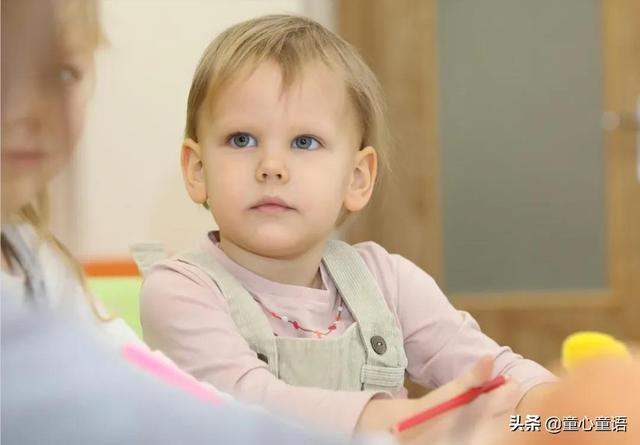孩子们互动越来越棒的话术(童心童语分享积极的指导)
Guiding children’s behavior is something done throughout the day, not just when a child acts in a way that is unsafe or unacceptable. You guide behavior by establishing predictable routines, setting clear rules with children, and modeling kindness and respect. You are also attentive and aware of what is going on. Together, these actions help children feel noticed, confident, and secure. Children experience your attention and guidance as a caring embrace holding everything together. They know you’re on their team. (Dombro, Jablon, & Stetson 2011, 58)
引导孩子的行为是老师每天都要做的事情,而不仅仅是当孩子的行为不安全或不可接受的时候。老师通过建立可预测的日常行为,为孩子们设定明确的规则,树立善良和尊重的榜样来引导他们的行为。
“你也很专注,知道发生了什么。这些行动一起帮助孩子们感到被关注、自信和安全。孩子们体验到你的关注和指导,就像一个关怀的拥抱,把一切都紧紧拥抱在一起。他们知道你在他们的队伍里。”
Dombro, Jablon,& Stetson 2011, 58
This excerpt shapes our thinking as we plan for positive guidance in our classroom at a preschool in Pahoa, Hawaii. Using the three steps of a Powerful Interaction—Be Present, Connect, and Extend Learning—helps us be more successful at building strong, caring relationships with children and families. Powerful Interactions are interactions in which a teacher intentionally connects with a child to extend his or her learning. We also actively plan for guidance, which keeps a positive climate in our classroom. This boosts how we feel at the end of the day and enhances each child’s success as a learner.
我们在夏威夷Pahoa的一所幼儿园的教室里进行“积极的指导”,这段实践了改变了我们的思想。利用强大的互动的三个步骤——参与、联系和扩展学习——帮助我们更成功地与孩子和家庭建立强大的、有爱心的关系。强有力的互动是指教师有意识的与孩子进行互动,以扩展孩子的学习层面。我们也积极计划指导,我们的课堂充满并保持积极的气氛。这增强了我们一天结束时的满足感,提高了每个孩子作为学习者的成功感。
Here are some strategies we use to plan for positive guidance, keeping a Powerful Interactions approach in mind.
这里有一些策略,用来计划积极的指导,记住,一个强大的,交互帮助的团队,会使“积极的指导”更有效!

团队合作使更加有效和强大的互动成为可能
It took time for us to become an effective teaching team. We had never worked together and had to become acquainted with each other’s teaching style. However, we wanted to be a seamless team because children tune in to their significant adults. We strive to coordinate our messages to children and Make them clear and consistent. By staying present (step one of a Powerful Interaction) with each other and connected with our eyes, words, laughter, and other cues, we extend children’s learning during group times and transitions. Our teamwork has positive effects on children’s behavior and the classroom climate. It also gives us more energy to guide children in positive ways and enjoy each day. Three tips help us ensure seamless teamwork:
我们花了很长时间才成为一支有效的教学团队。我们从未在一起工作过,因此必须熟悉彼此的教学风格。我们希望成为一个亲密无间的团队,因为孩子们会学习成年人之间的交往方式。我们努力协调我们给孩子们的信息,这些信息清楚明了且一致。通过与彼此保持“在场”(这是强有力的互动的第一步),并与我们的眼睛、言语、笑声和其他线索相联系,我们在小组活动和过渡期间扩展了孩子们的学习。我们的团队合作对孩子们的行为和课堂气氛有积极的影响。它也给我们更多的能量,以积极的方式引导孩子,享受每一天。团队无间合作有三个技巧,下面我们就一一说明。
01 明确角色
Be clear about roles. When we plan together, we clarify who will do what and when. Our goal is to be predictable about our roles during routines so that the children can anticipate what’s going to happen and who to look to for directions. This reduces challenging behaviors significantly. For example, at arrival time, Deborah greets children in our lending library and talks with them about books. At the same time, Danielle greets children and families at the classroom door and then moves around the room to support them as they do morning activities.
当我们一起做计划时,我们会明确谁将在什么时间做什么事情。在日常生活中我们的角色分工是可预测的,这样孩子们就可以预测将要发生什么,以及向谁寻求帮助,这大大减少了挑战性的行为的发生。例如,在早上入园的时候,黛博拉在图书馆迎接孩子们,和他们谈论书籍。与此同时,丹尼尔在教室门口迎接孩子们和他们的家人,然后在教室里巡视,帮助他们做晨间活动。

02 将两种声音合二为一
Make two voices one, literally and figuratively. This helps us deliver clear and cohesive messages to children. Too often children check with one adult and if they don’t like the answer, ask the other one. When children hear our voices from different areas of the room, they are more relaxed. We’re playful and sometimes silly about how we make our two voices one. We might echo each other’s voices melodically, complete each other’s sentences when giving directions, or finish each other’s rhymes. Danielle says, “There was one little bat in one big cave,” while looking over at Deborah who immediately chimes in, “He was so alone and not so brave.” The children enjoy the predictability of listening for our voices bouncing back and forth. Sometimes they look at the other adult to see what she’ll say.
让字面词语和形象化的语言两种声音合二为一。这有助于我们向孩子们传递清晰而聚焦的信息。孩子们经常向一位成人寻求答案,如果他们不喜欢这个答案,就会去问另一个成人。当孩子们从房间的不同区域听到我们的声音时,他们会更放松。对于如何让我们的两种声音合二为一,我们的方法很有趣,有时也很傻。我们可以有节奏地回应对方的声音,在给出提示后完成对方的句子,或者完成对方的押韵。丹妮尔老师说:“有一只小蝙蝠在一个大洞里。”然后她看向黛博拉,黛博拉会补充道:“它很孤独,并不那么勇敢。”孩子们喜欢听我们的声音可预测的来回跳动。有时他们会满怀期待的看着另一个成年人,想听听她会说什么。
03 频繁使用签到
Use frequent check-ins. We continually check in with each other throughout the day about what children are doing and how they are responding to activities and other children. We give each other signals about how things are going. The more we stay present, the easier it is to connect with each other. The result is a calmer classroom and fewer episodes of challenging behaviors. These tips have worked for us:
- Be on opposite sides of the room during indoor time to keep things running smoothly.
- Scan the room frequently, looking at what children are doing and at one another. Quickly read each other’s cues, such as a thumbs-up, smile, nod, or lift of an eyebrow.
- Update each other after an interaction with a child or family member. A quick summary or saying “Remind me to tell you about --- later today” ensures consistency with each other, the children, and their families.
- Tune in to those children who need a little more attention. This can prevent challenging situations by catching them before they start.
我们每天都不断地检查孩子们在做什么,他们对活动和其他孩子的反应如何。我们给对方信号,告诉对方事情进展如何。我们越是活在当下,就越容易与他人建立联系。其结果是课堂更平静,挑战性行为的次数更少。下面这些小贴士对我们很有用:
- 在室内的时候,要站在房间的两边,以保持一切正常。
- 经常扫视房间,看看孩子们在做什么,看看彼此。快速阅读对方的暗示,如竖起大拇指、微笑、点头或抬眉毛。
- 主讲与孩子或家人互动后,及时和班里其他老师信息更新。快速总结一下,或者说一句“今天晚些时候提醒我告诉你有关某某小朋友的事”,可以确保彼此、孩子及其家人的一致。
- 关注那些需要更多关注的孩子。在挑战开始之前注意到他们来防止挑战的出现。
用每天的达到时间为积极的指导定下基调
At the beginning of the year, teachers get to know children and their families through home visits and an orientation period (when a few children come for a few hours each day). During the orientation we introduce our arrival time routines. Our goal is for parents to have positive interactions with their children and for us to have Powerful Interactions with children and family members. Our routine and roles allow us to be present and connect with each child and her family for at least a few minutes. We plan activities that address positive guidance as well as language and literacy and math learning. When the day begins well, most children stay engaged and focused. Our predictable routine has three parts:
在学年开始的时候,老师们通过家访和迎新期(几个孩子每天来几个小时)来了解孩子和他们的家庭。在迎新会上,我们介绍了到达时间的安排。我们的目标是让父母与孩子有积极的互动,让我们与孩子和家庭成员有强大的互动。我们的日常生活和角色使我们能够与每个孩子和她的家人至少在几分钟内保持联系。我们计划的活动涉及积极的指导,以及语言、读写和数学学习。当一天开始的时候,大多数孩子都很专注。我们的日常生活有三个部分:
01 “学习中心”提供具体的活动教案
offer specific activities in learning centers. We display simple written directions for activities parents and children can do together. While completing the activities is not required, parents and children often do them because they are engaging and they spark ideas to use at home.
我们为家长和孩子一起做的活动进行展示并做简单的书面说明。虽然完成这些活动不是必须的,但父母和孩子们经常这样做,因为他们很投入,而且他们能激发灵感,并在家里延续。

02 早间书写每日信息
Write an interactive morning message. The daily message is for families to read to their child as the child points to each word. Part of the message specifically relates to positive guidance. In Hawaiian culture and in our program, we emphasize the values of aloha (kindness), malama (caring), and kuleana (responsibility). To engage families and children in discussion, one question invites reflection about one of these three values. For example, the message might ask, What’s one way that you will show malama today? A family member helps the child answer the question, records his answer on a Post-it note, and adds it to a message chart that is on display for the week. Additional messages might ask, “How many letters are in your name?” or “Who brought you to school today?” We discuss the daily message when we gather for group time later in the morning.
每日的信息是让家长在孩子指向每个单词时,读给他们听的。信息的一部分特别涉及积极的指导。在夏威夷文化和我们的主题中,我们强调aloha(善良)、malama(关心)和kuleana(责任)的价值。为了让家庭和孩子参与讨论,通常会用一个问题引发了对这三种价值观之一的深度思考。例如,消息可能会问,“您今天向他人展示关心的一种方式是什么了吗?”一位家庭成员帮助孩子回答问题,将他的回答记录在便签纸上,并将其添加到本周显示的消息图表中。其他的信息可能会问,“你的名字里有多少个字母?”或者“今天是谁带你来学校的?”“我们会在早上晚些时候进行小组讨论时,讨论每日的信息。

03 创建一个图书馆
Create a library.To encourage Powerful Interactions at home, we set up a lending library. Books are arranged in categories (that change periodically) so children can return their book in the morning and make a new selection. Children enjoy talking with Deborah about the books they return and hearing her recommendations for new selections.
为了鼓励在学校和家庭进行强有力的互动,我们建立了一个借阅图书馆。书籍被安排在不同的主题中(定期变化),这样孩子们可以在早上归还他们的书,并做出新的选择。孩子们喜欢和黛博拉老师谈论他们归还的书,听她推荐新的选择。
确保平稳过渡
As a team, we sustain a warm and friendly classroom climate by planning for and using teamwork to ensure smooth transitions. Over time we have established a repertoire of successful strategies in three main categories:
作为一个团队,我们通过规划和使用团队合作来确保顺利过渡,从而保持温暖和友好的课堂气氛。随着时间的推移,我们在三个主要类别中制订了一套成功的方案:
幽默
Humor. A light tone gives us energy and invites positive responses from children. Whether it is simply laughing aloud, making up a silly rhyme to give a direction, or singing funny words to a familiar song, we keep our transition times light and engaging. Sometimes we’re laughing at each other and our own silliness, which makes the children laugh, too.
一句善意的幽默给我们能量,并让孩子产生积极的反应。无论是简单地大声笑,编一个愚蠢的押韵来给一个方向,还是唱一首熟悉的歌,有趣的歌词,我们都保持我们的过渡时间轻松和迷人。有时我们嘲笑对方和我们自己的愚蠢,这也让孩子们笑了。
木偶
Puppets. When we gather on the rug between activities, we each wear a finger puppet. The puppets talk about what will happen next, what they observed about cleanup, or the behaviors expected in the next activity. The children know these puppets well and seem completely invested in listening to them. Daisy: Hey Fuzzy, I used my walking feet when I came over to large group. Fuzzy: Me too. We know our kuleana (responsibilities), don’t we!
当我们在活动间隙聚在地毯上时,我们每个人都戴着一个手指木偶。木偶们谈论接下来会发生什么,他们观察到的清理工作,或者下一个活动中预期的行为。孩子们很了解这些木偶,似乎完全投入在听他们说。黛西老师说:“嘿,福吉,当我在班级里时,我用我的脚轻轻走路。”福吉玩偶回答: “我也是。我们知道这是我们班级的规则,不是吗?”

音乐
Music. Songs and melodies add to the positive climate. When interacting with one child at a time, we use natural, authentic voices. However, when we want to engage the whole group, we find that singing directions captures their attention more than our normal voices. These strategies work for us:
歌曲和旋律增加了积极的气氛。每次与一个孩子交流时,我们使用自然、真实的声音。然而,当我们想要让整个团队都参与进来时,我们发现唱歌的方法比我们正常的声音更能吸引他们的注意力。这些策略对我们很有效:
- Give verbal directions in a melodic voice.
- Use call-and-response or rhymes or something that allows voices to alternate. When we sing songs that have an echo pattern—like “Down by the Bay”—the children know to expect our voices to alternate.
- Give directions as lyrics to a familiar song and alternate voices. For example, as it gets close to cleanup, Deborah starts singing to Danielle to the tune of “If You’re Happy and You Know It.”
用有趣的声音给出口头指示。使用呼应、押韵或其他有趣积极的声音的方式。当我们唱有节奏重复模式的歌曲时,比如“Down by the Bay”,孩子们知道我们的声音会交替出现。为一首熟悉的歌曲和交替的声音填词。例如,当清理工作接近尾声时,黛博拉开始用“如果你快乐,你就会知道”的曲调对丹妮尔唱歌,丹尼尔也会用这个曲调回应,直到完成整个过渡环节。

We have shared the ways we plan for positive guidance and use Powerful Interactions in our classroom to create a positive climate that prevents many challenging behaviors. The result is an enjoyable, effective, and productive learning environment. We hope you find the suggestions effective and that they spark more ideas for helping children and families.
我们分享了积极引导的方法,并在课堂上使用强有力的互动来创造一种积极的氛围,防止许多具有挑战性的行为。其结果是一个愉快的、有效的和富有成效的学习环境。我们希望您能发现这些建议是有效的,它们能激发更多帮助儿童和家庭的想法。
免责声明:本文仅代表文章作者的个人观点,与本站无关。其原创性、真实性以及文中陈述文字和内容未经本站证实,对本文以及其中全部或者部分内容文字的真实性、完整性和原创性本站不作任何保证或承诺,请读者仅作参考,并自行核实相关内容。文章投诉邮箱:anhduc.ph@yahoo.com






